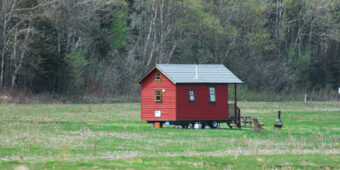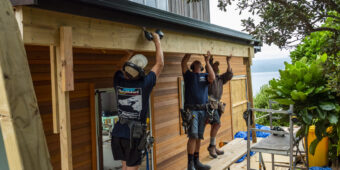Construction sector facing $5bn boom
26 Jan 2022, Industry News, News

The National Construction Pipeline Report 2021 has forecast growth in excess of $5bn over the next six years
Despite Covid-19 disruptions, the Ministry of Business, Innovation and Employment (MBIE)-prepared report said the construction industry will grow by $5.7bn between now and December 2026.
New Zealand’s total construction value experienced a 5.7% dip to $42.6bn during a pandemic-influenced 2020. However, predictions expect that decline to be short lived.
Key findings show:
- The strength of the residential sector will push construction activity value to $48.3bn in 2024.
- 265,000 new dwellings are predicted to be consented over the next six years.
- Non-residential activity is forecast to reach $10.2bn in 2025 – a slight increase on 2020’s prediction of $10.1bn by 2025.
- Infrastructure activity is forecast to reach $11.2bn in 2026, compared to the previous forecast of $10.1bn by 2025.
Regional outlook
Regionally, the picture is one of constant change. Auckland is forecast to grow at 15% to $19.6bn by the end of 2024, while non-residential building and infrastructure is expected to increase by 6% and 45% by the end of 2024. Residential building value is forecast to hit $10.3bn in 2026.
In the six years from 2021 to 2026, 111,000 dwelling units are expected to be consented, an increase on previous forecasts of 96,000 in 2019 and 73,000 in 2020.

Waikato/Bay of Plenty is expected to grow to $4.4bn by 2024 before dipping to $3.9bn by 2026. Non-residential building work is forecast to increase by 26% to $1.7bn, while infrastructure work is predicted to reach $2bn per annum by 2024.
The report expects 42,000 dwelling consents between 2021 and 2026.
In Wellington, total construction value is expected to decrease to $3.6bn, led by reductions in non-residential building and infrastructure. Residential building value is expected to increase, but the gains will be a marginal 0.3%.
Dwelling consents are expected to increase by over 21,000 during the forecast period, with multi-unit dwellings the most popular at 56% of consents.
Canterbury is predicted to experience fluctuating levels of growth. Residential building value is expected to peak at $3.9bn in 2024 before dropping to $3.5bn per annum by 2026. Non-residential building activity is expected to reduce by 36% to $1bn in 2021, followed by an increase to $1.7bn in the years to 2026. Infrastructure is forecast to reach $1.2bn per annum in 2024.
Dwelling consents are forecast to reach 7,040 in 2023.
Otago is expected to see residential building activity peak at $1.8bn in 2024, before reducing to $1.7bn in 2026. Non-residential activity is forecast to reach $0.7bn by 2023. Infrastructure activity is expected to be $0.6bn by 2026.
Over the forecast period, Otago is expected to consent 15,000 dwellings.
The rest of New Zealand’s 10 regions can expect to see an increase of total construction value to $7.3bn in 2021 before falling to $6.8bn in 2026. Non-residential growth is anticipated to hit $1.7bn by 2026, while infrastructure spending will reach $1.8bn by the same year.
Dwelling consents are forecast to reach 6,500 in 2022 before falling to 5,000 by 2026.

Enthusiastic reception
Construction Sector Accord Transformation Director Dean Kimpton said the projections are incredibly encouraging.
“It’s pretty extraordinary to see such strong forecasts in the Pipeline Report. This time last year the predictions were fairly dire, but we now know the sector has built up an incredible head of steam since then, with record building consents. Our worst problems right now are not enough people and materials to do the job.”
Kimpton added this news should give builders the confidence required to invest in future-proofing their business.
“As a sector, we need to get ahead of the game. We need to invest in our people and cast a wider, more diverse net on recruiting. We need to up our game on innovation. We need to accept that climate change also means a change in how we build. At the Accord, we think this strong pipeline should give the sector confidence about the changes that are needed. The work is there. The investment will be worth it.”
Revised numbers
The national Construction Pipeline Report had previously forecast lower non-residential and infrastructure activity by 2025. 2020’s report forecast activity of $10.1bn for non-residential activity, and $10.1bn of infrastructure activity – both those numbers have been upgraded for 2021.
The Construction Sector Accord is a partnership between industry and government to fix issues and challenges facing the construction sector. Through its three-year Transformation Plan, the Accord seeks to drive behaviour change to lift overall performance and achieve a safer, better skilled and more productive industry and to share good practice across the sector.

Register to earn LBP Points Sign in



